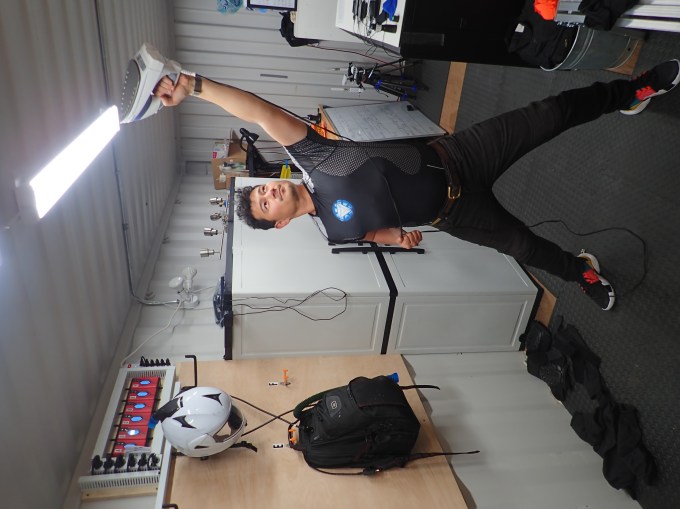Months into this global pandemic, many questions remain about whether and when companies of all sizes will return to their offices and what will be required of the move. The future is so unclear that even people steeped in the real estate industry don’t have all the answers — though they’re starting to make educated guesses around what will happen next.
A trove of new data being released tomorrow by the commercial real estate services giant CBRE underscores the somewhat schizophrenic situation employees will be facing. Based on CBRE’s studies of 200 companies across the globe that say they are returning to the office, 59% say they will provide face coverings for their employees, 28% percent plan to require face coverings at all times, 21% will allow visitors to the workplace in the early phases of reopening, and 13% will conduct screening of employees on-site at every facility.
Yet deciding on the exact right patchwork of social distancing measures is just one piece of the picture. Until a vaccine materializes that can eradicate COVID-19, organizing office spaces will be as challenging companies try striking a balance between employee safety and some semblance of normalcy. Indeed, the only certainty for many management teams is that they have to make some changes. Of the many questions CBRE posed in its survey, the most uniform answers centered on how many companies plan to establish space-use policies that reflect social distancing (80%) and how many plan to reconfigure their furniture layouts (60%).
Presumably, many will be ditching breakrooms and even cafeterias. Others will be trying to ensure that employees are stationed at least six feet apart. But expect many other changes, too, suggest venture investors who are focused on real estate and construction tech and who are right now focusing on which technologies will be most in demand in the coming months and years.
Among the most focused of these outfits is Fifth Wall Ventures and Brick and Mortar Ventures, two firms that have emerged on the scene in recent years and that are tracking closely what’s happening for both professional and personal reasons.
Darren Bechtel, for example, who announced Brick and Mortar’s $97.5 million debut venture fund just nine months ago, is working out of an Airstream trailer in the driveway of a rental property where he, his wife, and their young children are living because they both have work calls to make throughout the day.
While racing inside and out is far from ideal, Bechtel says, he’s not prepared to re-open Brick and Mortar’s Bay Area offices any time soon, even while California gradually reopens the state. “We’re in no rush; I’m erring on the side of being overly conservative.” (Virtual happy hours also help, he says.)
Brendan Wallace, cofounder of L.A.-based Fifth Wall, is similarly hesitant to force employees back to the office too soon and suggests it’s a decision he and cofounder Brad Greiwe wrestle with, even while they’ve been “optimistically surprised by how productive our team is in a work-remote environment.”
Part of both firms’ reluctance stems from knowing that their offices — like so many others — may need to be redesigned. In fact, though office design businesses aren’t venture-type bets, Wallace notes that the need now to consider employee movement flows should mean brisk business for those outfits.
More interesting to both investors are technologies that are scalable and also, in today’s environment, suddenly more compelling to building owners and managers and developers. Both Wallace and Bechtel mention advanced air purifiers and air handling units used to re-condition and circulate air as part of a heating, ventilating and air-conditioning, as one growing area of interest, for example.
Wallace also expects commercial spaces that were already adopting all kinds of smart technologies to install them much more aggressively, from sensors that can determine how many people are in a room or passed through a turnstile to facial recognition tech that help can keep points of physical contact to a minimum. He even imagines that more companies will embrace robots, to patrol buildings, and to clean them, too.
Businesses now “have to take on a responsibility for tenants that they didn’t have before,” says Wallace. And as they “look to retrofit [their spaces] more ambitiously, we want to be ahead of that.”
Bechtel, for his part, thinks the industry may see demand for either individual private offices or much larger conference rooms to accommodate new concerns around safety or personal health.
He also thinks now may be the moment for materials companies that produce, say, antimicrobial textiles. “People have been developing [related] greener materials for some time but there wasn’t demand for it,” he says.
Because Brick and Mortar ventures is largely focused on construction tech, it will also be looking more vigorously at ways construction firms can improve the safety of job sites and improve productivity as they are re-imaging spaces that need to be redone. That could mean everything from contact tracing to reality capture software (which creates 3D models out of photographs or laser scans). It could also mean a surge in demand for off-site, pre-fabricated construction.
“If you’re limited by how many people can work in the field, and you have to put in controls for people not working on top of each other, the question becomes: how can you do the work in a more controlled environment, with a next-gen HVAC system [to purify the air] and markings on the floor?” Says Bechtel, “People are now saying, ‘How much can we prepare off site?'”
No doubt that much of this tech and its adoption will depend on how long it takes for a vaccine that can eradicate COVID-19 to materialize. Should a vaccine come faster than expected, already cash-strapped businesses may view major changes to their physical spaces as less of a priority. It’s human nature to quickly forget.
“We’re just 75 days in,” notes Wallace. “There’s still a a lot of information that needs to come to light,” he adds, noting that on a very fundamental level, no one yet knows if people will even return to their offices en masse or instead continue to work remotely. “What happens on the office side, I don’t know, I’m just being honest,” he says.
Nevertheless, as economies re-open, businesses, universities and other institutions will need to have a plan of attack to prevent the virus’s spread, and some will presumably lead to permanent changes.
The investors hope so. Right now, Wallace says, “Buildings are dumb. For the most part, they just exist to keep heat and air conditioning in.” Wallaces hopes that if anything good comes out of this situation, it’s buildings that are made smarter and safer — and can adapt to health risks like this one.







